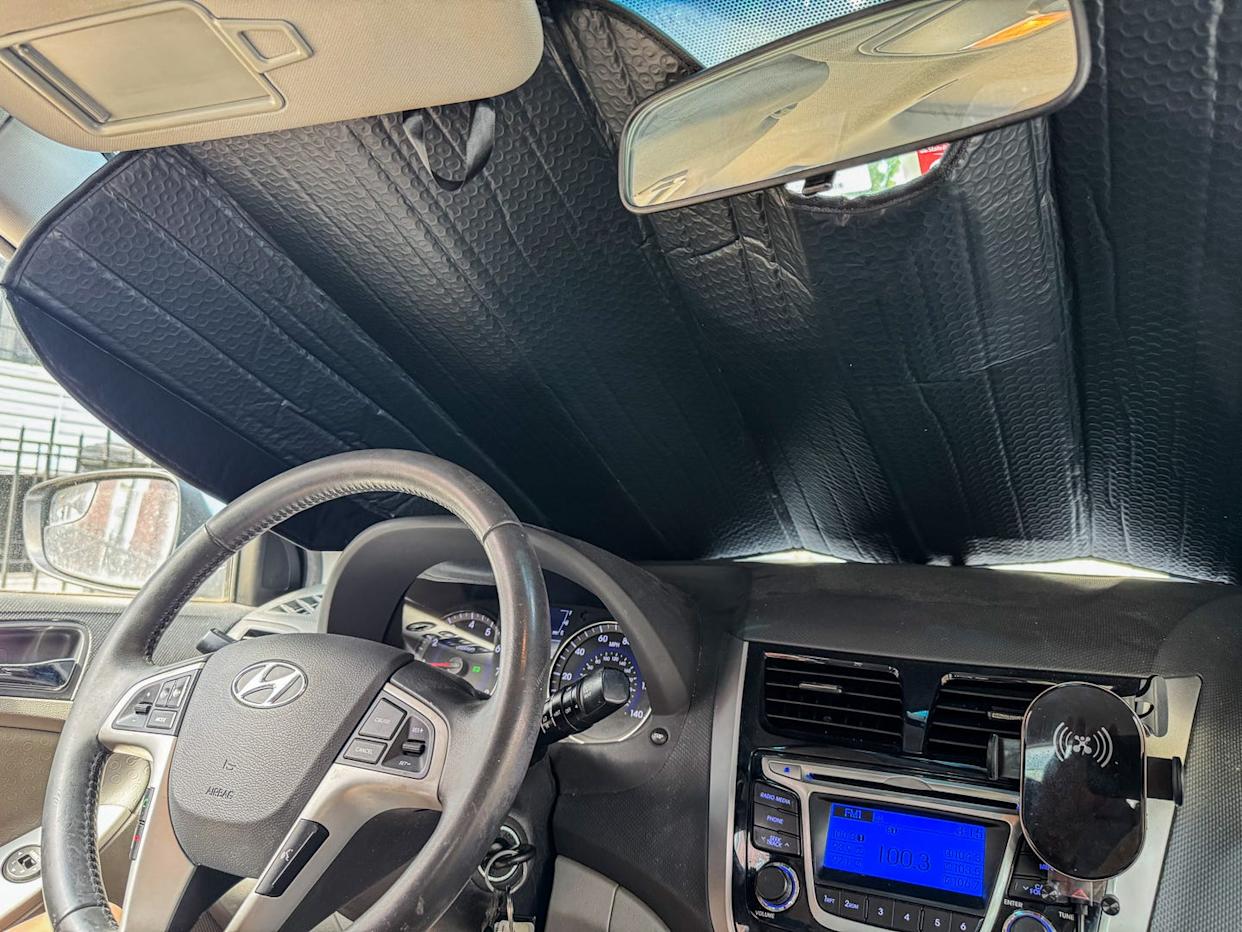
"Hearst Magazines and Yahoo may earn commission or revenue on some items through these links."
Every time my grandmother parked the car, that accordion-style sun shade came out like clockwork. She unfurled and stretched it across the windshield of her black 1988 Ford Tempo. That simple device was a lifesaver on those hot, bright days when the stifling air inside her parked car could rise to 120 degrees after an hour. As low-tech as it seemed back then, that metallic sunshade did the trick by reflecting enough sunlight to keep the interior noticeably cooler. That was 30 years ago, and sun shades are still a popular and affordable auto accessory today.
Back in 1991, the Los Angeles Times ran an article about Israeli inventor Abraham Levy who created the modern accordion-style windshield shade in 1972 in Israel. Having had a tough time convincing many people that his new device was worth a second look, it took most of the decade to catch on with the public. Then in 1980, he patented CarCool here in the United States. Imitators saw a savvy idea and sprang to action, flooding the market with their own copies.
With windshield sun shades as widely available as they are now, I wanted to know how well they work. I was sure they would reduce a car’s interior temperature compared to being unshaded, but by how much? Would it be enough of a difference to be worth the slight hassle of driving around with a sun shade folded up in the back seat, or had my childhood memories of that cooler Ford Tempo interior been deceiving me all along?
Available in a wide variety of designs, including accordion, umbrella and folding, a sun shade not only keeps your car‘s interior cooler in summer, but can help prevent UV exposure and potential damage to your vehicle’s interior, seats, dashboard, and electronics. There are universal and custom-fit types, and many feature a foam core that can insulate, too, to keep your car’s interior warmer in winter months.
The Expert
I’ve been an automotive journalist for 15 years, and I’ve spent the entirety of that time living on the East Coast. First, in North Carolina, where the temperatures by July and August would tickle the triple-digit marker on the thermometer. Later, I moved to New York and seemed to bring the stifling-hot weather with me. Temperatures in the high 90s became more common here, too. If that isn’t enough, I regularly test cars and take hiking trips in the Southwestern deserts, coupled with the fact that I prefer black cars and leather interiors. All to say, I know the sting of sliding into a burning-hot car’s interior way too well.
How Does a Sun Shade Work? We Tested to Find Out.
Ever stand in the shade of a tree, awning, or building on a sweltering day to cool down? Being out of the sun’s direct rays reduces heat absorbed through radiation. Your body heats up less in the shade than if you were standing out in the open absorbing the full blast of the sun’s rays. Your car benefits in the same way from having shade.
A car sun shade placed in the windshield relies on a shiny, reflective silver foil surface that faces outward from the car. When sun hits, the light bounces back, thereby preventing it from reaching the car’s interior. Without that shade, the surfaces would absorb the sunlight in the form of radiation heat, which then would warm up the air inside the car via convection heat, like an oven. Even without a reflective surface, but instead a dark one, a sun shade will still absorb some of the sun’s energy, which helps to reduce temperature rising inside the vehicle.
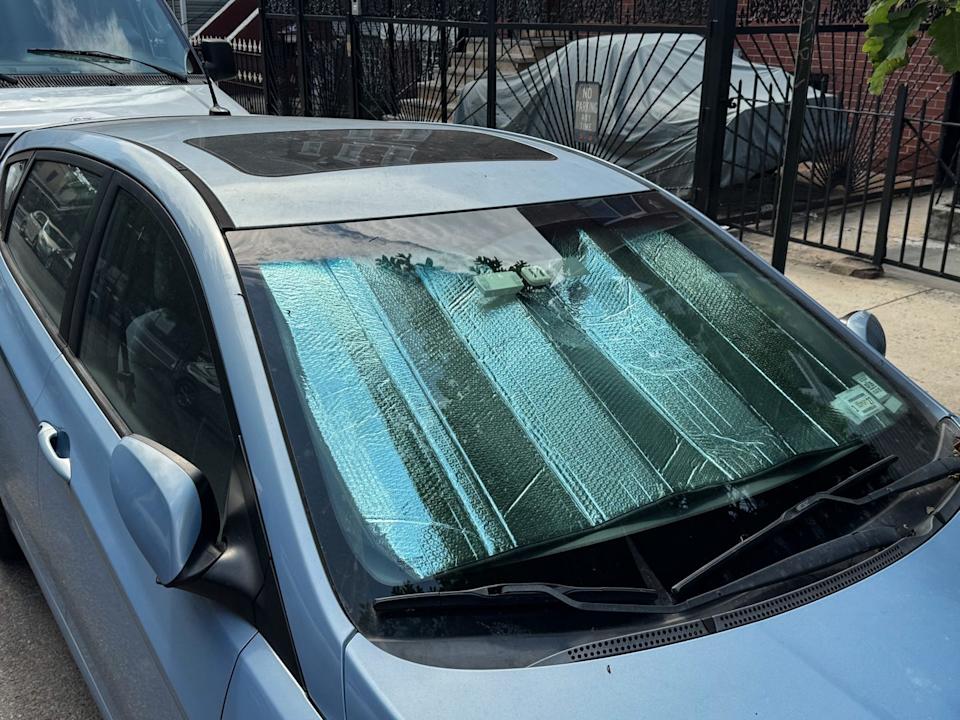
The second way a sun shade prevents a car’s interior from heating up involves the layer of foam insulation between the shiny, outer-facing foil layer and the inner-facing layer. Not every sun shade has this layer, but most do. The principle behind it is this: Air is an awful conductor of heat. For instance, anytime you put another blanket on your bed or wear a heavy coat, you’re using that to your advantage. The trapped air between the fabric fibers or goose down fluff slows down your body’s loss of heat to your cold surroundings because the heat gets trapped in those many tiny pockets of air.
The same applies with the insulating foam middle layer in a sun shade, only in this case it works to keep your car’s interior cool. The shiny, foil side reflects and blocks a lot of the sun’s heat, but there’s residual heat that warms the sun shade itself. The foam layer keeps the sun shade’s warmth from reaching the car’s interior by trapping this residual heat within the tiny pockets of air.
The cooling effect provided by a sun shade can be remarkable. To test this, I dragged my old car into the sun to evaluate. My vehicle is a black 1984 Mazda RX-7 with burgundy leather interior. This old sports car, with its steeply raked windshield, is basically all glass from the hip up. Translation: it has a long history of roasting me to death like a Thanksgiving turkey because it’s basically a greenhouse.
To take full advantage of the heat wave that was crushing the East Coast earlier this summer, I propped up an accordion-style sun shade over the dashboard and used a handheld thermometer to see how hot the interior got with and without a sun shade after 90 minutes parked in the mid-day sun.
Because there isn’t custom-fit sun shade available for this older car, I had to use a sun shade that wasn’t a perfect fit. Over the course of a week, I took advantage of four sunny days to capture temperature readings with the understanding that several variables were at play: ambient temperature, sun exposure, cloud cover, time of day, the angle at which the car is parked, and the car itself— a laboratory test in a controlled environment, this was not. Still, the results were consistent in real-world testing.
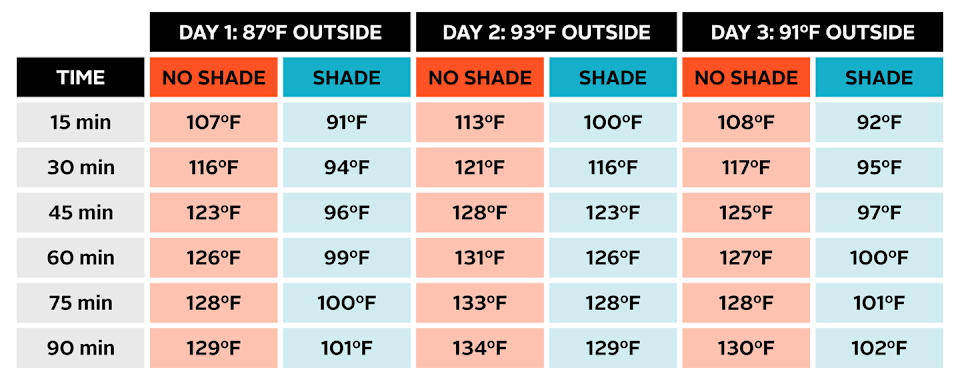
The benefits of the sun shade were apparent quickly. After 30 minutes, the car with the sun shade was 10 degrees cooler than it was without the sun shade. That’s a temperature difference you’d notice when opening the door and plopping onto the seat. After an hour, the car’s interior temperature with the sun shade topped 90 degrees. That’s still hot, but a noticeable improvement over the unshaded interior measurements that hit close to 120 degrees at the one-hour mark and continued to climb a few degrees toward 125 degrees over the following 30 minutes.
Later, I came back for further evaluation, but this time using a silver 2011 Hyundai Accent with cloth seats for another test case. Given the Hyundai’s larger interior, with five seats, I wondered if it might be harder to cool down than the smaller, two-seater Mazda, but the level of cooling that the sun shade provided was about the same for each of the two cars.
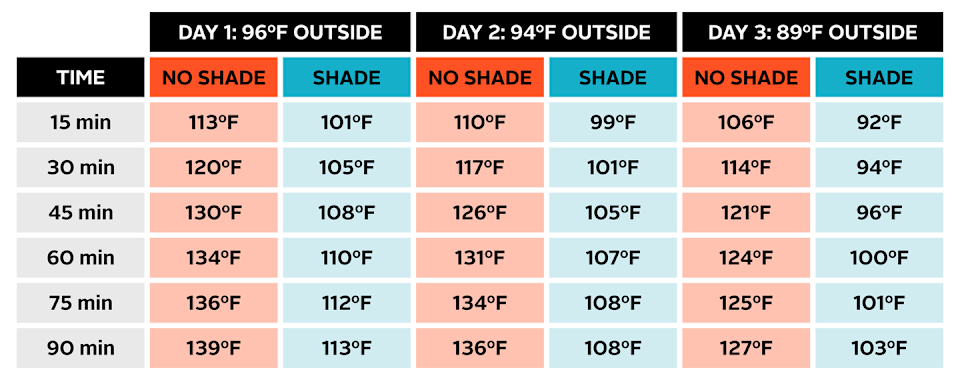
How to Use a Sun Shade Correctly
Unfolding, opening, or unrolling one of these won’t require a master’s degree. They’re simple to use, but make sure to unfurl it while you and it are both inside the car; otherwise, it’s going to be unnecessarily hard to fit it through the car’s door. Locate the cut-out for the rear-view mirror and check that you’ve got the shade oriented with the cut-out at the top. Point the shade’s shiny side facing outward and then place it flat against the windshield. Plenty of sun shades have shiny foil on both sides. If so with yours, it won’t matter which side points outward.
Hold the shade in place with one hand while you flip down both sun visors to secure the sun shade in place. Many car sun shades can be purchased as custom-fit to your make and model, but universal ones in a rectangular design will fit most vehicles’ windshields. If you do go for a one-size-fits-all sun shade, keep in mind you may have to tweak the fitment by folding back the shade’s edges to fit your car’s windshield. On the Accent, a subcompact car, I had to do exactly that, whereas I’d expect that the same sun shade could be spread out in all its unconstrained glory across the cavernous windshield of a Ford F-150.
What to Look for in a Car Sun Shade
Ease of Use
Accordion-style folding sun shades tend to be quicker and easier to use than the other styles, and if your sunshade is quicker and easier to use—even slightly more—then you’re more likely to use it. There’s no fighting with stubborn suction cups or finicky umbrella-style sun shades, nor are there any delicate parts to break. An accordion sun shade can be easily stowed in a backseat pocket, under the front passenger seat, or even the trunk of your vehicle.
Proper Fitment
Back in the ‘90s, I remember windshield sunshades as being one-size-fits-all. You’d just stretch the big rectangle across your windshield. It’d mostly fit. There might be some light leakage around the edges, but it was good enough back then. Now, most sunshades are custom fit to your car’s windshield but will likely cost more than a universal one.
Color Variations
All the sun shades I know of are some combination of black, gray, and silver. Some sunshades come with a black side opposite the foil. These are meant for all-seasons use: simply turn the shade inside out during cold months. During winter, for example, face the black side of the sunshade outward and the foil side inward. Rather than reflect the sun’s heat, the black side absorbs it, warming the car’s interior.
Maintenance and Care
Good news for those already overwhelmed by the maintenance needs of owning an automobile. There’s barely any upkeep or cleaning required for a sun shade. Theoretically a dirty sunshade will reflect less sun, reducing its performance not to mention it’ll look grungy. If yours needs a cleaning, wipe it down with a damp paper towel. That’s it.
FAQ
Why do you only cover windshield sun shades?
Windshields are angled more steeply than other windows in your vehicle in order to cut down on the car’s wind resistance, and so they allow lots of sunlight to pass into the interior when the sun is more directly overhead during the hottest parts of the day. The steeper the pane of glass, such as the rear window on an SUV, the more the roof tends to block overhead sunlight.
Some brands do offer shades for rear and side windows. These block additional sun, protect your vehicle’s seating and interior in the back, and provide privacy.
Should I park facing a particular direction?
In short, yes. If you’ve parked your car around noon and the sun is directly overhead, it doesn’t won't matter which way your car is facing while you’re in the store or restaurant. Neither does it matter if your car won’t move all day, such as if you’re at work. But if you’re dashing into the movie theater for a matinee and the sun is at an angle, try to park so that your windshield is facing the direction of the sun. That way the sun shade can block it head on, rather than letting that sneaky sun try to toast your car through its side or rear windows.
When should I use a non-accordion-style sun shade?
Even vehicles with steep windshields have enough of a dashboard to prop up an accordion-style sun shade. My 1999 Jeep Wrangler has the aerodynamics of a church with a windshield modeled after the broad side of a barn, and even that has enough of a dashboard to prop up a folding sun shade. I just haven’t found a situation in which I’d rather fiddle with an annoying suction cup-style model. For side windows and the steep rear windows of pickups and SUVs, however, I’d use suction cup shades in those. But here we’re talking about windshield shades, and so I’d pass.
Umbrella-style sun shades? I’m not a fan of how finicky and delicate they are. Just think of the last time you opened an umbrella. An umbrella-style sun shade won’t be fighting wind, but there are still lots of little parts to break compared to an accordion-style sun shade. The only time I’d consider an umbrella design would be if I was driving a two-seater with no interior cargo space. Think Mazda MX-5 Miata or Chevrolet Corvette convertible. Even if the trunk were available, I’d reserve that for cargo and use an umbrella-style shade that I could tuck away somewhere in the interior.
Our Recommended Sun Shades
Foldable Custom-Fit Sun Shade
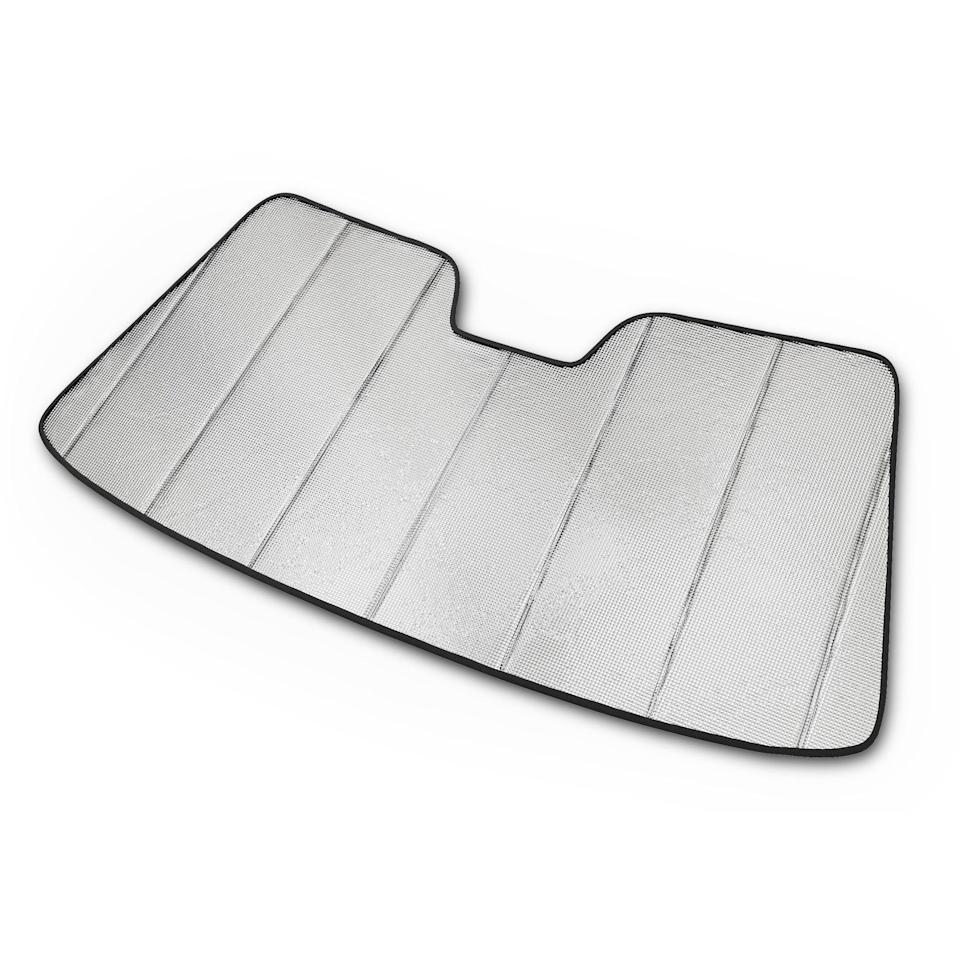
This premium design strikes a balance between features and cost. Nobody wants to overspend for a sunshade, but most would still appreciate a well-fitting sun shade sized to perfectly fit their car’s windshield that leaves no gaps around the edges. This sun shade has a felt-covered interior side that prevents scratches to the dashboard. That’s especially handy on smooth plastic interior surfaces, which are more scratch prone if you happen to catch a piece of dirt or grit between an uncoated sunshade and the dash.
Universal Sunshade
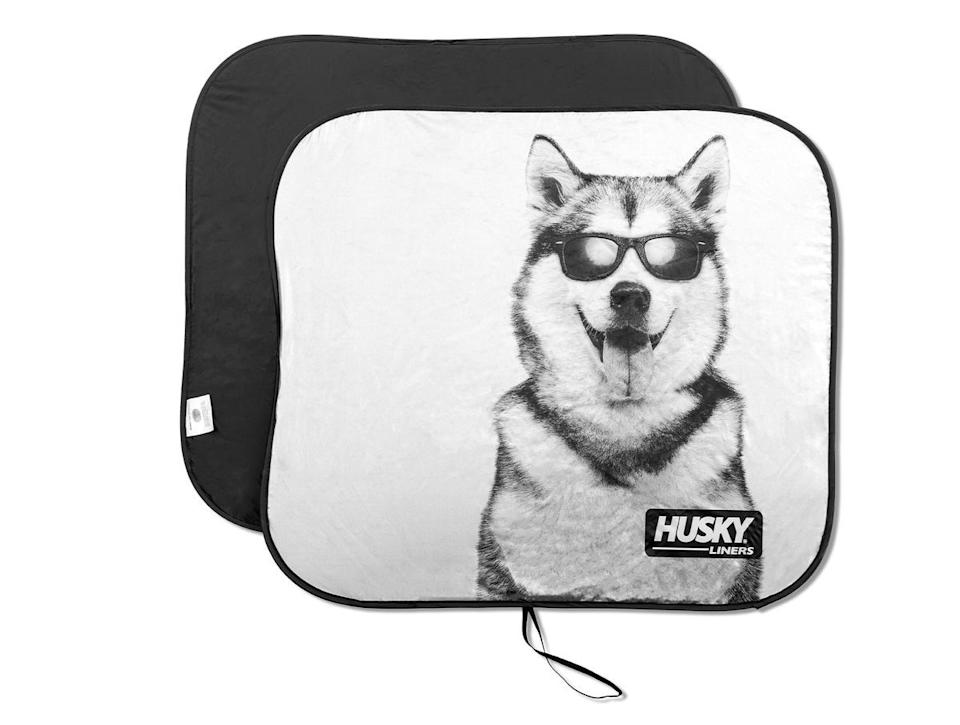
Because this sun shade consists of two nearly (but not exactly) square pieces, you can rotate them longer side up for taller windshields. There aren’t many light passenger vehicles on the market with windshields 62 inches or wider, which would be the width of the two shades next to each other and not overlapping, so they’ll fit just about any car, light truck, or SUV available now. If you’re looking for a sun shade for a larger commercial vehicle or an RV, you’ll have to keep looking.
Custom-Fit Sun Shade

The WeatherTech Sun Shade’s roll-up storage design is not as rigid as an accordion-style sun shade, but sturdy, so you don’t have to worry about it falling down once it’s unfurled across your dashboard. Its foam core provides insulation between the sun and the car’s interior. Rather than toss the WeatherTech into storage during the winter, just flip it around, with the black side facing out, and it’ll absorb sunlight to warm your car’s cold interior.
You Might Also Like
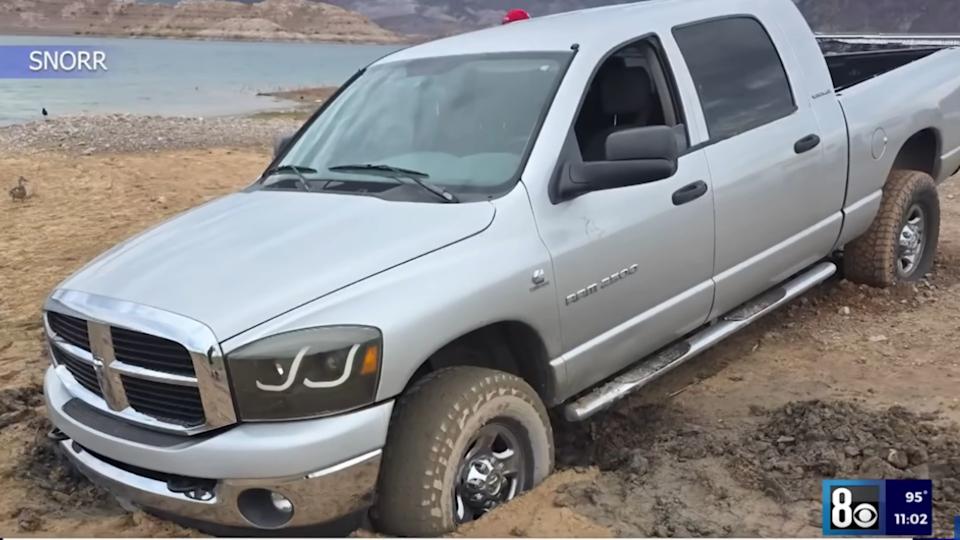
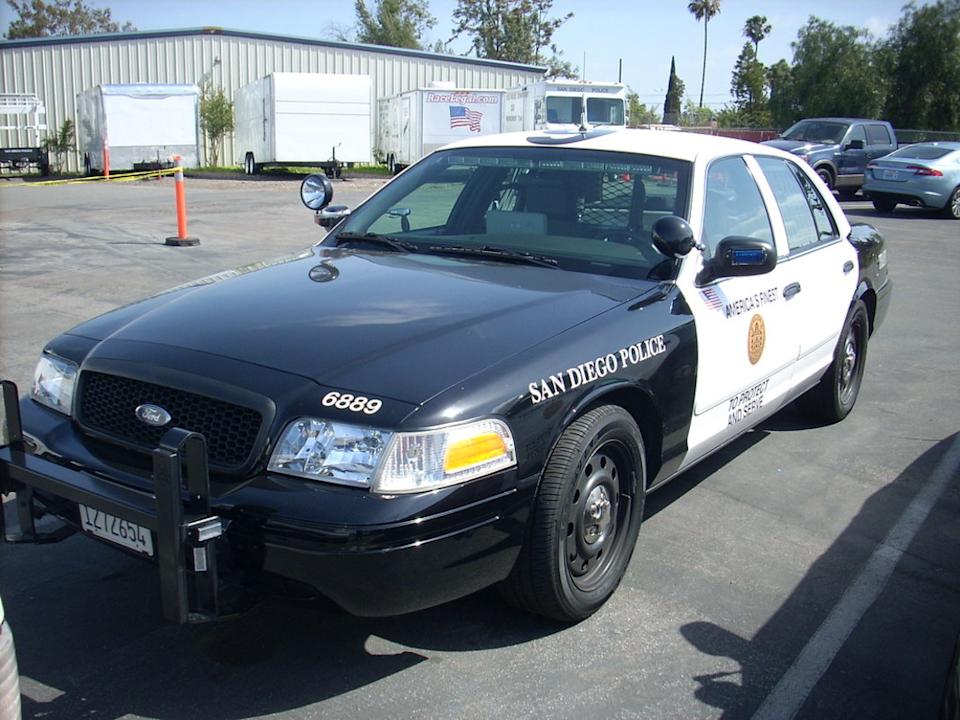





Comments